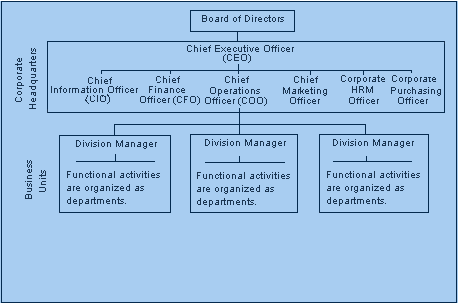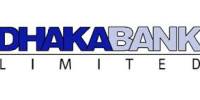INTRODUCTION
1.1: Background of the Report
An employee might more knowledgeable and skilful by training and development program or process that maintaining an effective level job performance. So it acts an important role in HR department. As a part of BBA program, our Human Resources practices in bangladesh course teacher Aysya Bintte Saifullah assigned us to prepare a report on HRM process and practice process in a multinational organization as related topic on Human Resource Practices in Bangladesh course. We have selected our report topic as “Training and Development in Unilever Bangladesh Ltd.”. We have made a survey for required information in Unilever official site in net. We have prepared our report on December 17, 2011 which will be submitted by December 19, 2011.
1.3: Objective of the Study
We have prepared this report based on two purposes. Those are-
1) To develop our Knowledge in Human Resources Management Program
2) And provide more Valuable Information gathered for who passionate employee to want to join in this company
1.3.1 Primary Objective:
The report aims to provide information on suggest more valuable step follow to make a training program effective of by the Nestle bangladesh through HR department.
1.4: Scope of the Study
There is a certain boundary to cover this report. Our particular report only covers Training and Development in Nestle Bangladesh Ltd. We mainly focus on Training and Development Program followed Nestle Bangladesh.
1.5: Limitations of the Study
We are lucky enough to get a chance to prepare a report on “Training and Development Process Bangladesh Ltd.” We tried heart & soul to prepare a well-informed report. But unfortunately we faced some difficulties when preparing this report. We tried to overcome the difficulties. In spite of trying our level best, some difficulties that hamper our schedule report work:
1.4.1 Shortage of time:
Within a short time, we need to prepare some other courses’ reports for in this session.
For this reason, we could not get a fluent time schedule for the report.
1.4.2 Limitation of related with the organization:
The employees of Nestle Bangladesh Limited were too busy of there work. For this, they did not sufficient time to fulfill our queries and some of them neglected us to support.
1.4.3 Difficulty in collecting data:
Many employers of the organization were not well known about all information that we asked them. Many of them also hesitated to answer the questions. These things hampered the information collection.
Methodology
2.2 Sources of collecting data:
We collecting data and some valuable information by internet from Nestle Bangladesh Ltd.Official web-site and others web site.
3.0 Company Profiles
Nestle Alimentana, Switzerland, a wholly owned subsidiary of Nestle Holdings Ltd. the Company expanded its product range with new products in instant coffee, noodles, sauces, pickles, culinary aids, chocolates and confectionery, dairy products and mineral water. Nestlé can trace its origins back to 1866, when the first European condensed milk factory was opened in Cham, Switzerland, by the Anglo-Swiss Condensed Milk Company. One year later, Henri Nestlé, a trained pharmacist, launched one of the world’s first prepared infant cereals ‘Farine lactée’ in Vevey, Switzerland. With headquarters still based in the Swiss town of Vevey. We employ around 280 000 people and have factories or operations in almost every country in the world. Nestlé sales for 2010 were almost CHF 110 bn. today Nestlé Bangladesh Ltd. is a strongly positioned organization. The Company will continue to grow through our policy of constant innovation and renovation, concentrating on our core competencies and our commitment to high quality, with the aim of providing the best quality food to the people of Bangladesh.
3.1 Background of the company
Nestlé – the world’s largest food group, not only in terms of its sales but also in terms of its product range and its geographical presence: Nestlé covers nearly every field of nutrition: infant formula, milk products, chocolate and confectionery, instant coffee, ice-cream, culinary products, frozen ready-made meals, mineral water etc. We are also a major producer of pet food. In most of these product groups and in most markets, Nestlé is the leader or at least a strong number two. This is very focused Company, with more than 94 percent of the sales coming from the food and beverage sector. Nestlé is present around the globe, on all continents, with around 230,000 people working in more in an 84 countries with 466 factories and with sales representatives in at least another 70 countries. Many of our brand names are familiar: Nescafé, Nido, Maggi, Polo, Smarties, Milo, Perrier, Friskies, KitKat, Crunch.
The Company’s strategy is guided by several fundamental principles. Nestlé’s existing products grow through innovation and renovation while maintaining a balance in geographic activities and product lines. Long-term potential is never sacrificed for short-term performance. The Company’s priority is to bring the best and most relevant products to people, wherever they are, whatever their needs, throughout their lives.
3.2 Nature of business
“Nature of Business” means what type of business your are doing? Like Wholesale, Retail or Service, Manufacturing, Marketing, etc. If you want more specific, then Furniture manufacturing, health Drinks marketing, etc. so as far we know that the nestle is a food manufacturing company with lots of food products and world widely is provided to all.
3.3 Organizational overview
We tend to view organizing a matter of decision-making: we decide to arrange the people, jobs, and positions that we have available to meet management’s needs. But, there are real constraints on the forms of organization available to us. Hospitals tend not to be structured like fast food restaurants, and banks are not organized like a manufacturing plant. The task (or type of work to be done), the technology (the way we know how to do something), and our knowledge of what has worked and what does not work influence and limit our choice of organizational design.
3.3.1 Mission and Vision
Nestlé Bangladesh’s vision is to be recognized as the most successful food and drink Company in Bangladesh, generating sustainable, profitable growth and continuously improving results to the benefit of shareholders and employee, as the question arises that the nature of business, then it is a public organization with health department regulation under the governmental activity and health instate of Bangladesh. So fortunately it’s a non-profitable organization and health stimulating organization, to think about the heath of the country people, this organization has been established. And the leadership is not just about size; it is also about behavior. Trust, too, is about behavior; and we recognize that trust is earned only over a long period of time by consistently delivering on our promises. These objectives and behaviors are encapsulated in the simple phrase, “Good Food, Good Life”, a phrase that sums up our corporate ambition. Nestle Bangladesh’s vision is to be recognized as the most successful food and drink Company in Bangladesh, generating sustainable, profitable growth and continuously improving results to the benefit of shareholders and employee
3.3.2 Purpose and principles
The Nestlé Corporate Business Principles are at the basis of company’s culture, which has developed over the span of 140 years. Since Henri Nestlé first developed his successful infant cereal “Farine Lactée”, we have built our business on the conviction that to have long-term success for our shareholders, we not only have to comply with all applicable legal requirements and ensure that all our activities are sustainable, but additionally we have to create significant value for society. A modular training programme will be rolled out on the various components of the Corporate Business Principles. The depth and focus of the trainings will be established in accordance with the materiality for the different functions within the company. For example, the training on the human rights components will focus on managers and employees in countries of higher human rights risks as a priority, with the aim to having completed the first training cycle by the end of the year.
Our Corporate Business Principles will continue to evolve and adapt to a changing world, our basic foundation is unchanged from the time of the origins of our Company, and reflects the basic ideas of fairness, honesty, and a general concern for people.
Nestlé is committed to the following Business Principles in all countries, taking into account local legislation, cultural and religious practices:
- Nutrition, Health and Wellness
- Quality Assurance and product safety
- Consumer Communication
- Human rights in business activities
- Leadership and personal responsibility
- Safety and health at work
- Supplier and customer relations
- Agriculture and rural development
- Environmental sustainability
- Water
3.3.3 Logo and Visual language
“Good Food Good Life” this is what the company takes as their visual language with a great logo which creates a brand awareness with standard and dignity.
3.3.4 Shareholders
Nestlé Bangladesh Limited started its first commercial production in Bangladesh in 1994. In 1998. Nestle S.A. took over the remaining 40% share from our local partner when Nestlé Bangladesh became a fully owned
subsidiary of Nestlé S.A.. And it’s the leading nutrition, health and wellness company.
3.3.5 Organ gram and organizational structure

In the organization of nestle the organizational structure is quiet simple, we can see from the structure that from the starting level the executive director is the main of the company in Bangladesh Paul Bulcke is the Chief executive manager of nestle. After that six officers are doing their responsibility as their post and grades. After that there are three divisional managers are working in the different divisions and sections. But the company like nestle just can’t think so easily they made various processes to maintain good division in organization.
3.4 Divisions of the company
By the turn of the century a new organizational form had begun to emerge. As businesses expanded into new markets and new products, the functional form
failed to be efficient for managing a diversification strategy. By the 1950’s nearly all of the diversified firms listed in the Fortune 500 organized using the Multi-Divisional form (MDF). The MDF structure organized businesses under a headquarters that functions as banker, strategist, and coordinator for multiple business units (sometime termed “strategic business units” or SBU’s). This form is often characterized as organizing by outputs (products).
3.4.1 Human Resource division
We have chosen FMCG(fast moving consumer goods) sector because it is quite fragmented but the fastest growing sector. Even smallest companies in fmcg sector practices ‘ethical selling’.
To carry out our project, we met top executives in both organization. We have comprehensive discussion with all executives we met. In both organization we met marketing manager, head of sales and marketing department, sales administration and distribution manager, training manager ,sales representative , HR manager.
3.5Products and Services
Most people know us through our brands. Our portfolio covers almost every food and beverage category – giving consumers tastier and healthier products to enjoy at every eating occasion and throughout life’s stages including times of special nutritional need. Some exclusive products of nestle sales in Bangladesh are given below:
Baby foods: Cerelac, Gerber Graduates, NaturNes, Nestum
Bottled water: Nestlé Pure Life, Perrier, Poland Spring
Chocapic, Cini Minis, Cookie Crisp, Estrelitas, Fitness, Nesquik Cereal
Chocolate & confectionery: Aero, Butterfinger, Cailler, Crunch, Kit Kat, Orion, Smarties, Wonka
Coffee: Nescafé, Nescafé 3 in 1, Nescafé Cappuccino, Nescafé Classic,Nescafé Decaff, Nescafé Dolce Gusto, Nescafé Gold, Nespresso
Culinary, chilled and frozen food: Buitoni, Herta, Hot Pockets, Lean Cuisine, Maggi, Stouffer’s, Thomy
Dairy: Carnation, Coffee-Mate, La Laitière, Nido
Drinks: Juicy Juice, Milo, Nesquik, Nestea
Food service: Chef, Chef-Mate, Maggi, Milo, Minor’s, Nescafé, Nestea, Sjora,Lean
Ice cream: Dreyer’s, Extrême, Nestlé Ice Creame
3.6 Recent company achievements
Nestlé was last week crowned the winner of the 27th World Environment Center (WEC) Gold Medal award for its commitment to environmental sustainability.
Paul Bulcke, Chief Executive Officer of Nestlé, accepted the award “on behalf of our Chairman and the 280,000 employees that make Nestlé today”.
Bulcke also stressed that “this award is a mandate, an obligation and motivation to do even better so that also future generations can enjoy Good Food and a Good Life with Nestlé.”
The WEC Gold Medal Award is presented annually to a global company that has demonstrated a unique example of sustainability in business practice and is one of the most prestigious forms of recognition of a global company’s ongoing commitment to the practice of sustainable development.
Nestlé was originally announced as the winner in January, ahead of this month’s official prize ceremony.
4.0 Analysis and Findings
4.1 HRM practices followed by the company/ Specific HR sector like- Training and development:
Training and development is a vital and effective operation of an organization. It is people, not buildings that make a company successful.
Assets make things possible but people make things happen. And for making them efficient and hardworking company should provide training and development of their staffs and nestle do the same thing as all biggest and efficient companies do for their staffs and all over the human resource department, and employees play dual role in the company. First, as a factor of production. And second, it makes other factors operative and productive. To make them efficient
Company firstly find out the problems and some problems are:
Self-serving bias: Attribute own success to internal factors and failure to the external factors.
Selective Perception: People selectively interpret what they see on the basis of their interest, backgrounds and experience.
Projection: Attributing one’s characteristics to other people.
Halo Effect: Drawing a general impression about a person on the basis of a single characteristic.
Contrast effect: Evaluation of a person’s characteristics that are affected by comparison with other people recently encountered who rank higher or lower on the same characteristics.
After all the assessment they found that if they provide some facilities they the staffs could be very efficient and those facilities are:
Other programes followed by the company are:
Local training: these trainings are carried out within the country by reputed training institution from, Bangladesh slavery and labor training institute and consultant from foreign training institutes are invited to conduct training. These trainings are usually take place at a different venue other that the office.
In- house training: these trainings are basically held within the office premises and usually get conducted by the senior managers who are specialist in different field.
Training about the market survey: company plays a vital role in the market survey by sending their staff at market and operate a project by management to get the fluency and efficiency of the staffs.
Overseas training: company provides need based training to the employee through the usage of appropriate external training instate, which are very often conducted overseas. Most of the functional trainings are provided by foreign training.
Diversification training: it’s a process of training where staffs work at the different level and post of the management and identify the efficiency and effectiveness of their work ability.
5.2 Conclusion
The report has attempted to point out recruitment and selection process in Nestle
Bangladesh. We can get little information about recruitment and selection process in Unilever Bangladesh. We also take support by some secondary reports as well as internet and Unilever report publication.
















